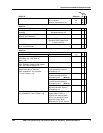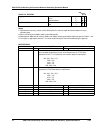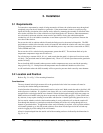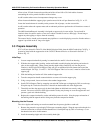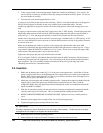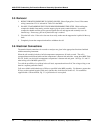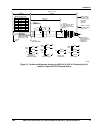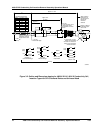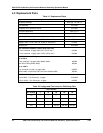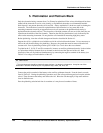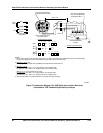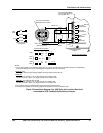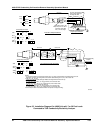
Maintenance and Replacement Parts
7/99 4909 CPVC Conductivity Cell Insertion/Removal Assembly– Operations Manual 17
4. Maintenance and Replacement Parts
If a series of below normal conductivity readings or above normal resistivity readings occur, this may
indicate that the cell is not filled with process solution. Check the cell installation. Refer to Sections 3.1
and 3.2.
The only maintenance which may be required is occasional cleaning in certain applications. The 0.01, 0.1,
and 1.0 cm
-1
low constant electrodes are not platinized.
4.1 To Clean The Cell
CAUTION
The cell assembly is PES (polyethersulfone). Do not clean with acetone, chloroform, toluene, benzene, or any
chlorinated hydrocarbon.
The cell will require cleaning if sludge, slime, etc., accumulates in the flow channels. Since the materials of
construction are chemically inert, chemical agents may be used and are recommended for cleaning the cells.
The particular cleaning agent used must be selected according to the type of contamination to which the cell
is exposed. In general, soap and hot water cleaning solution is effective. Immerse the plastic body of the
cell in this solution. A 10 or 15 minute soaking period should be adequate. If necessary, a soft bristle brush
of appropriate diameter may be used to clean out the tubular channels of the 5, 10, 20, 25 and 50 constant
cells. Care must be taken not to scratch the electrode surfaces. Do not use a brush on the low (0.01, 0.1
and 1) constant cells and be especially careful not to bend the electrode plates of the 0.1 constant cell.
Rinse the cell thoroughly in tap water and then in distilled water if available. To remove the platinum black
from electrodes (5 to 50 constants only), refer to Section 5. Replatinizing after each cleaning (5 to 50
constant cells only) may not be necessary unless brushing was used.
4.2 Replacing Removal Device Parts
Ball Valve
If a new ball valve is installed, orient the valve body so that the heavy walled end is toward the process
connection for added support strength. See Teflon tape note below.
Nipples
If nipples are replaced, use exact replacement to ensure pressure and temperature ratings, proper immersion
length and proper operation of removal device.
Use only Teflon tape on all valve, nipple and support tube pipe threads. Other liquid or paste sealants may
contain solvents that weaken the CPVC material.
Bushing And Washer
Replace these parts if swollen, cracked or damaged in a way that prevents a good seal on the support tube.
Lightly grease the new bushing with silicone grease before installing.
Note that the support grip must be removed from the support tube before replacing the bushing and/or
washer. Orient the bushing so that the tapered surface faces away from the compression handle, Fig. 1-5.



